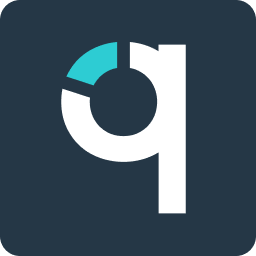How to Design an Effective Employee Development Plan

Development is a key focus area for leaders in 2024. Organizations need highly skilled employees, especially in an ongoing labor shortage. But not all employee development plans are created equal. Learn how to design an effective employee development plan to focus your efforts on the best learning initiatives.
What is an employee development plan?
A development plan outlines a clear set of instructions and guidelines for completing learning initiatives. These learning initiatives should all pertain to a specific development goal. The learning initiatives outlined in a development plan can vary from hands-on workshops to eLearning modules. The goal of development decides the best way for employees to learn skills or competencies. Sometimes, employees go through staged programs that assess their progress and certify they have gained the needed knowledge, skills, or abilities.
Companies that align employee development plans with business and career goals show commitment to supporting individual success within the organization. By creating personalized development plans, companies can ensure that employees are motivated and engaged in their work. This approach also helps to increase employee retention and overall job satisfaction.
It’s Time to Rethink Your Employee Development Strategy
Recent Gartner research shows that 73% of HR professionals think their leadership team isn’t ready to lead change. To stay competitive, organizations need strong leaders who can drive change within the organization and achieve new strategic goals. Competencies like Change Management and People Management help managers communicate employee expectations and guide their development.
Additionally, 93% of survey respondents believe moral leadership is more urgent than ever, showing a need for better leadership training programs.
Hear Jessie Conley from Everbridge discuss learning and development and other current competency trends alongside our experts.
Ingredients for a Successful Employee Development Plan
Every employee development plan should be unique to the individual and strongly correlated to the organization’s strategy.
Competency Profiles
Based on our recent survey, almost three quarters (73.2%) of respondents use competencies to drive their development programs. Competency profiles outline the specific competencies required for successful performance in a job. Multi-level competencies identify at what level of proficiency an employee should be at in their role, as well. Managers and employees can use competency profiles to evaluate an employee’s performance objectively against these criteria. Managers can use competency profiles to help underperforming employees improve their job performance by identifying what they need to develop.
Competency profiles also help employees discover gaps between their current abilities and those required of a job they are interested in developing into. They can then work with their manager to develop a plan to close these gaps.
Competency profiles also provide the framework to find the best learning initiatives. They also provide standards for determining how effectively the development plan helped the employee learn new skills and competencies.
.png)
Regular Competency Assessments
Organizations can use a variety of assessments to quantify how well an employee is performing.
Self-Assessments
The competency profile typically includes behavioral indicators and proficiency levels for each competency. Employees can use these as the standards to assess their own performance using a common rating scale. Managers can compile the results into a report that includes the results for all competencies, highlighting both the employee strengths and areas requiring improvement. Leaders can then use this information to support the creation of an employee development plan.
360-Degree Feedback
This type of feedback comes from more than one assessor. The process includes, at minimum, the employee and their supervisor, but it can also include others in the organization the employee regularly interacts with, for example: clients, peers, and direct reports. Like self-assessments, the report compiled afterwards can be used to target development efforts to the particular needs of the employee.
Other Methods of Assessment
Organizations can also gather information on the performance of employees through other assessments, including competency-based behavioral interviews, roleplaying and simulations, and portfolio reviews.
Group Reports
Organizational leaders can consolidate individual gaps identified through competency assessments into a group report. This way, leaders can make clear decisions on the best strategies to close gaps in the most cost-effective way.
“Competencies provide a framework for organizations to align learning and training programs with specific skill requirements, ensuring targeted skill development. Compared to organizations without competencies in their talent programs, those incorporating competencies are better equipped to strategically address skill gaps, optimize training resources, and foster a more effective workforce.” – Tricia Corbie-Yeates, Project Analyst at Republic Bank Limited
Where to Begin
Job descriptions that incorporate competency profiles are a necessary foundation for any talent management program, including employee development planning. When an employee does not have an accurate and up-to-date job description, they and their supervisors will be unclear about their primary duties and responsibilities and where to focus their efforts. Learn more about job descriptions and how they can elevate your talent programs.
%20(2).png)
Related Resources





